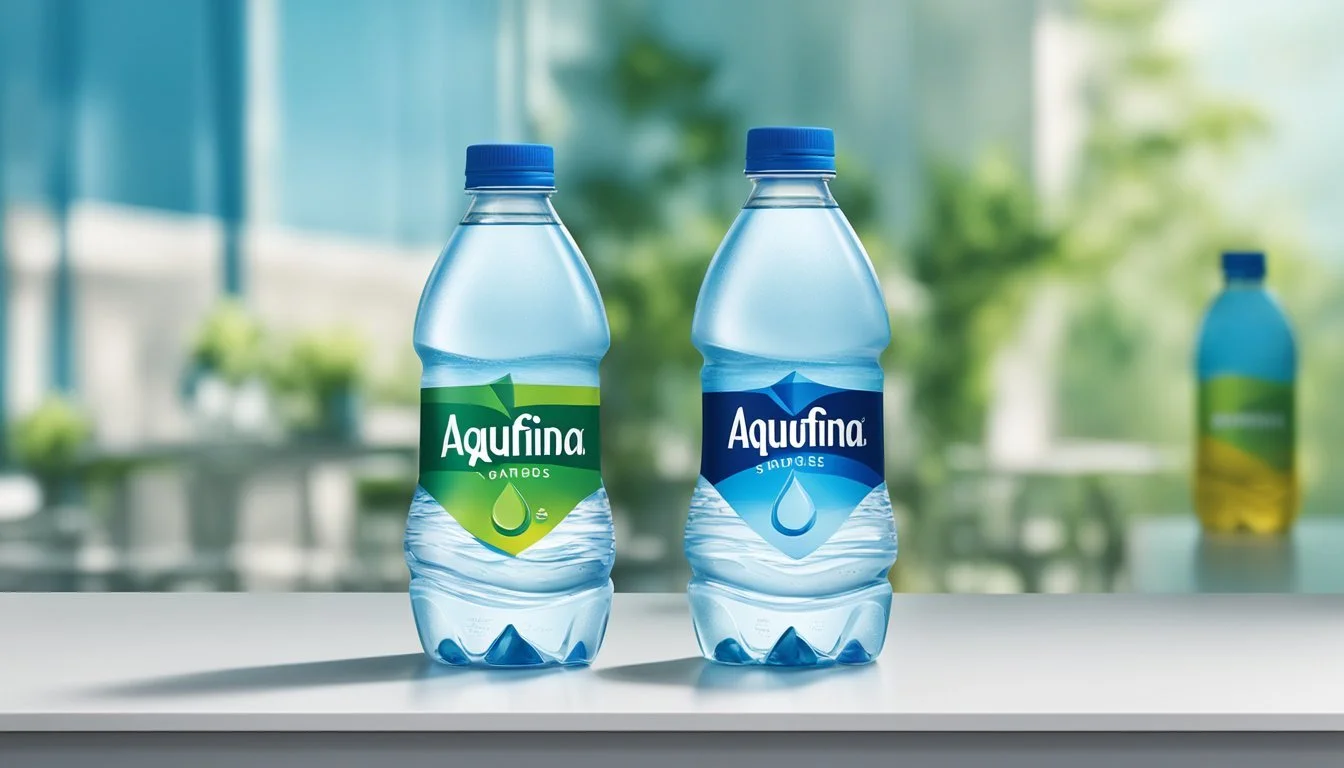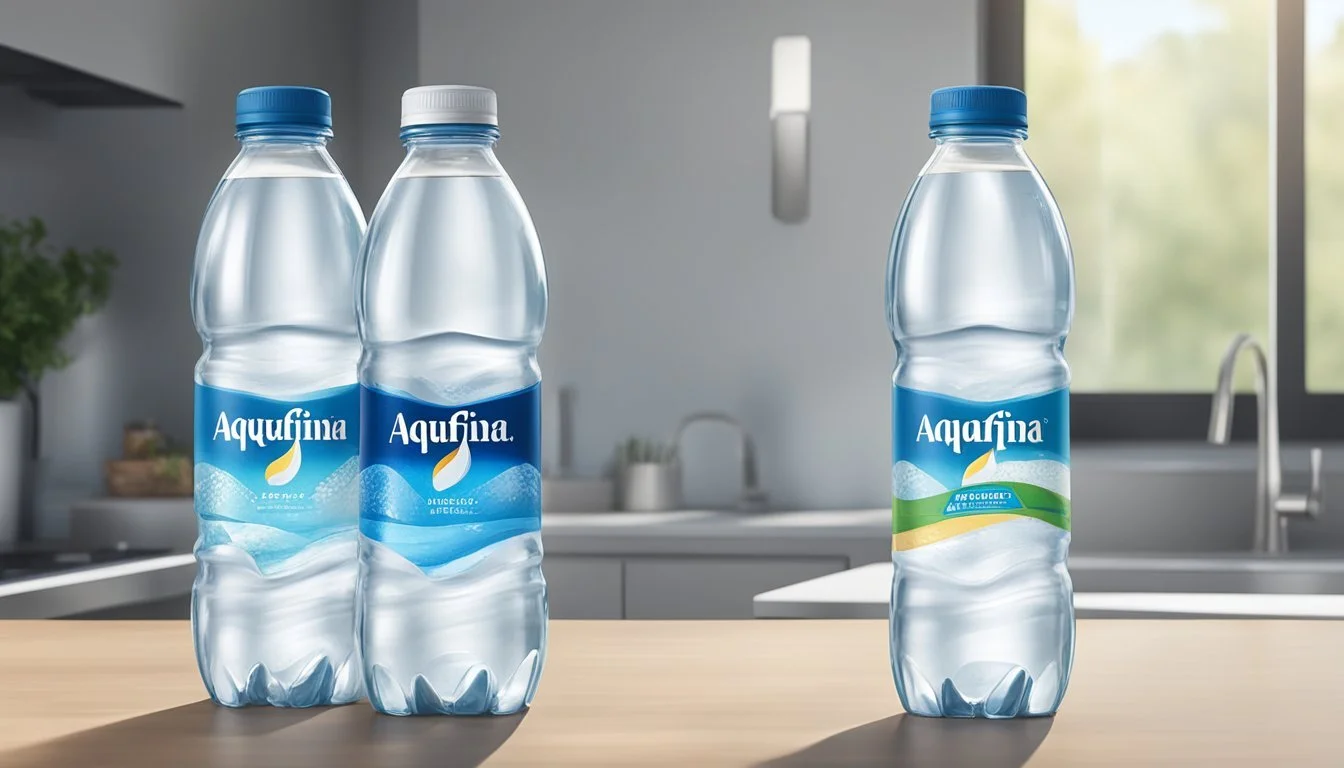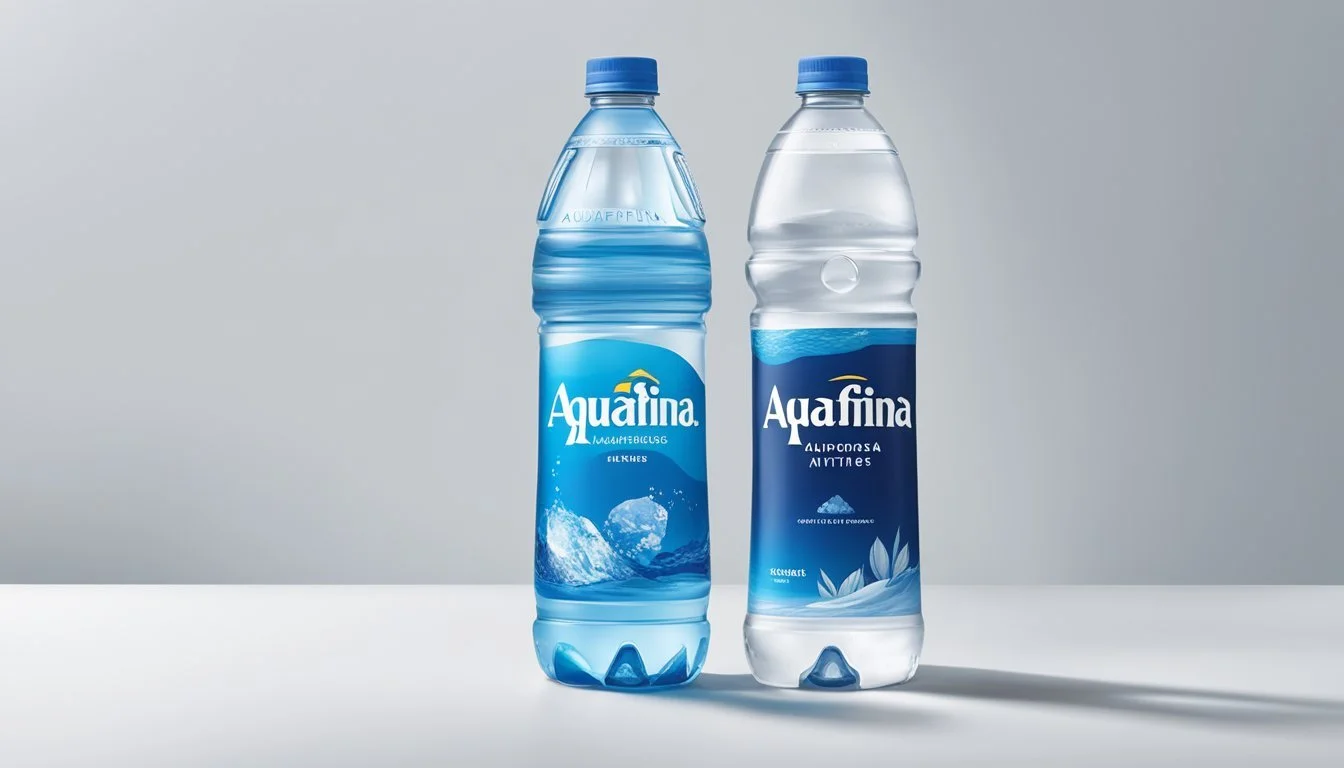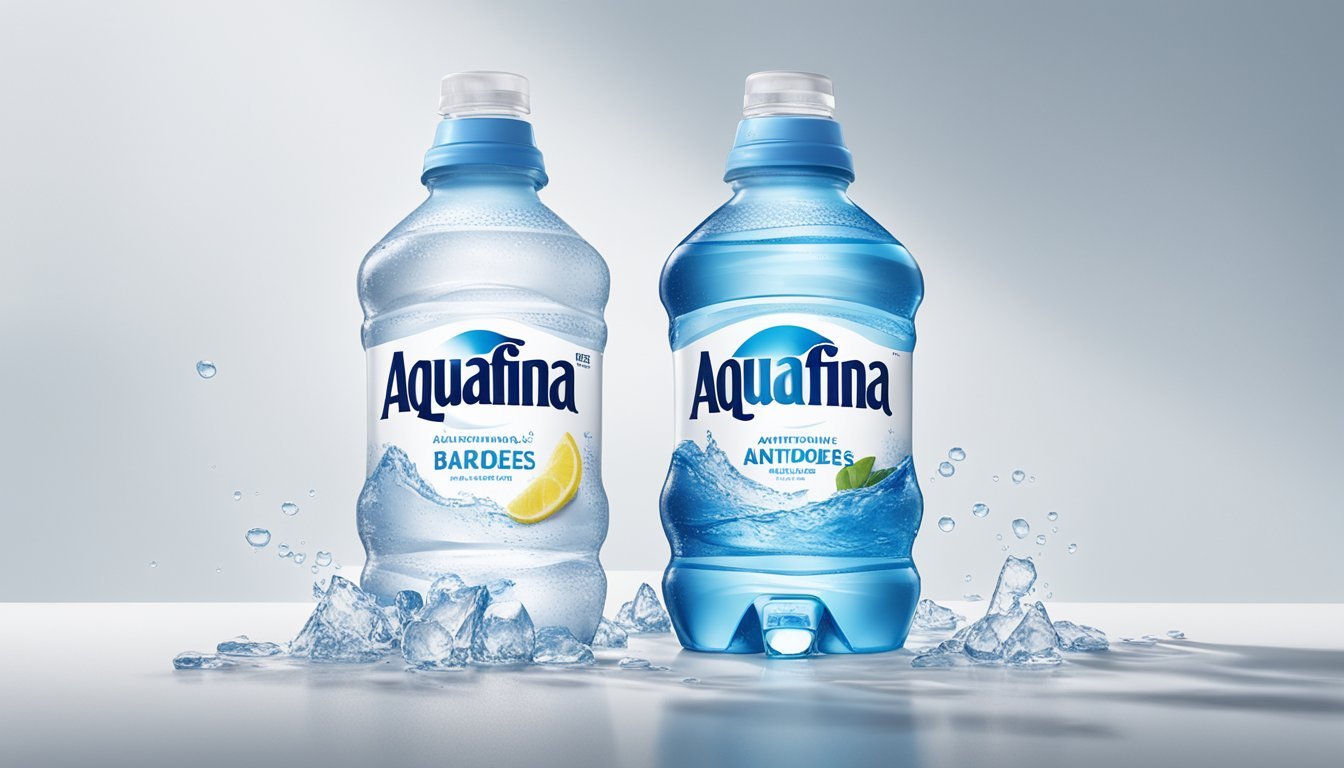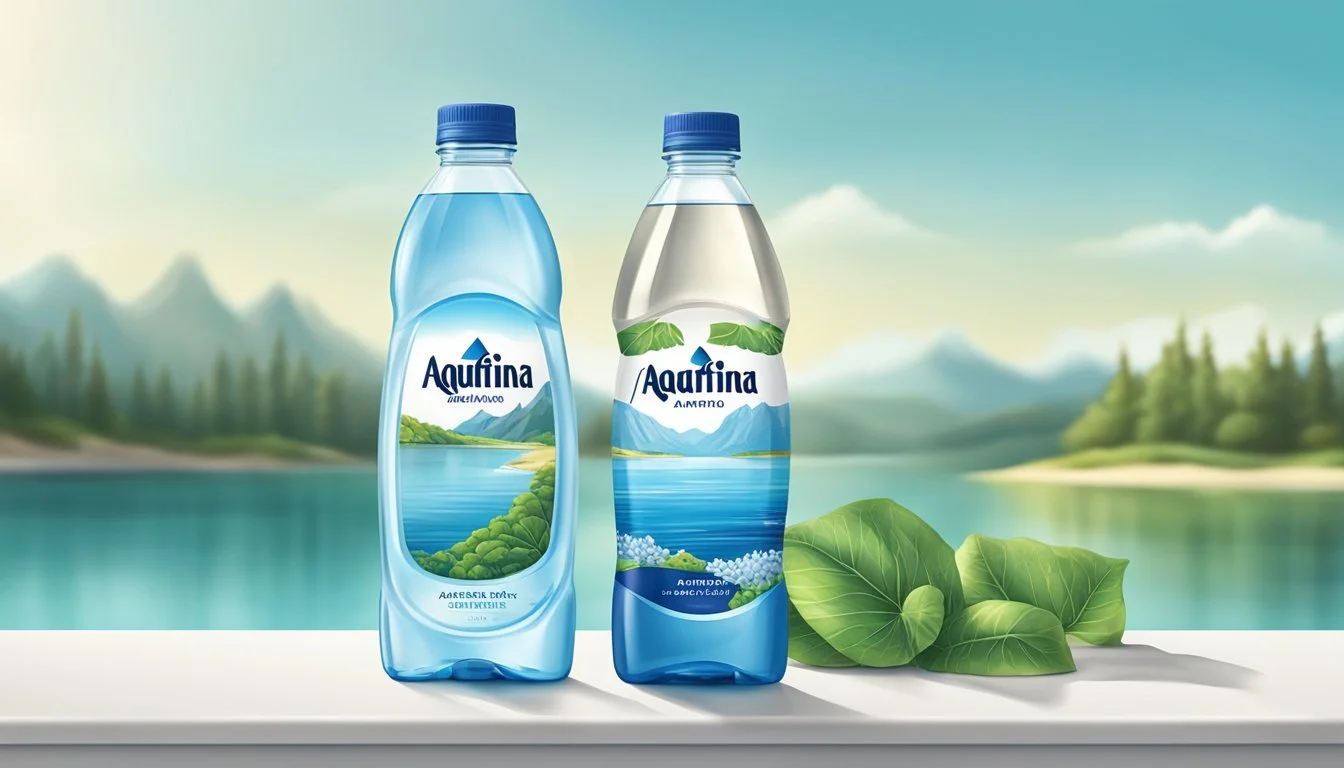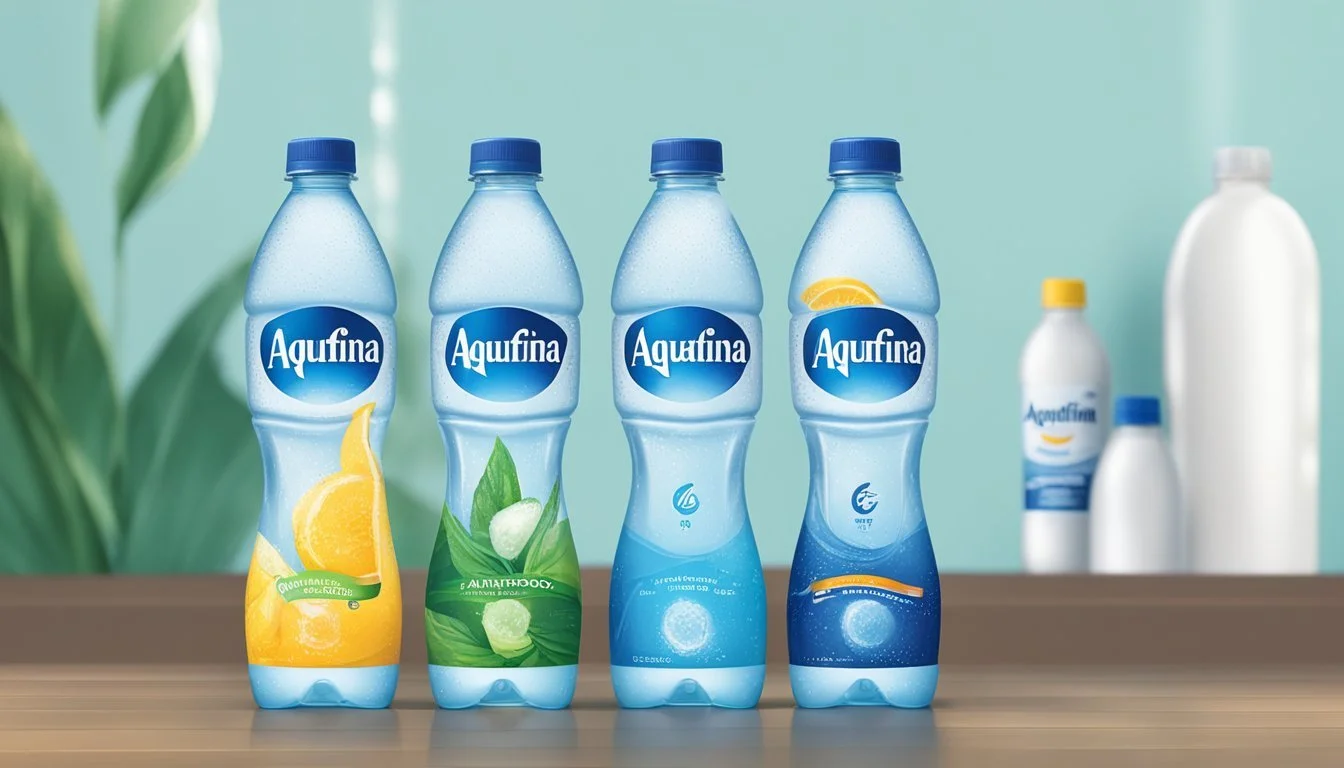Aquafina vs. Antipodes
Ultimate Bottled Water Comparison
When it comes to choosing the best bottled water, two prominent brands often come to mind: Aquafina and Antipodes. Both have dedicated followings and use advanced filtration methods to ensure their water is pure and refreshing. Aquafina boasts a rigorous 7-step HydRO-7 filtration process, designed to remove impurities and enhance taste. On the other hand, Antipodes, sourced from an aquifer in New Zealand, prides itself on its natural purity and crisp texture.
Consumers looking for a bottled water that combines thorough filtration with a clean finish often turn to Aquafina. Conversely, those who prefer their water to be sourced from pristine and untouched environments frequently opt for Antipodes. For those who value meticulously filtered water, Aquafina stands out as a top contender, while Antipodes remains a favorite for its natural origins and pure taste.
This article delves into the details, comparing these two popular brands to help readers make an informed choice about which bottled water suits their preferences and lifestyle best.
Overview of Bottled Water Market
The bottled water market is vast and diverse, encompassing various brands each known for their unique characteristics and target consumers. Bottled waters have become a staple in grocery stores worldwide, reaching a broad audience.
Key Brands and Players
Popular brands like Aquafina, Dasani, Evian, Fiji, and Voss dominate the market. PepsiCo owns Aquafina, while Coca-Cola produces Dasani, highlighting significant corporate influence in this industry.
Nestlé, one of the largest players, offers a range of bottled waters including Nestlé Pure Life, Poland Spring, and Ice Mountain. This variety helps serve different consumer preferences and needs.
Filtration and Purification Processes
Different brands use distinct purification methods. Aquafina uses a seven-step HydRO-7 filtration process to enhance purity.
Dasani employs reverse osmosis and adds mineral salts for taste, while Fiji touts its natural artesian aquifer source. Each process aims to cater to specific tastes and quality requirements.
Mineral Content and Taste
Many bottled waters vary in their mineral content, influencing taste and consumer choices. For instance, Icelandic Glacial promotes its natural spring source, emphasizing low mineral content and high purity.
Acqua Panna, sourced from Italy, offers mineral-rich profiles that appeal to gourmet markets. LIFEWTR targets a younger demographic with balanced minerals and sleek branding.
Market Trends and Growth
The bottled water industry is experiencing significant growth, with global sales escalating rapidly over the past decade. Health-conscious consumers are increasingly opting for bottled water over sugary beverages, driving market expansion.
Brands like Zephyrhills focus on regional markets, while Icelandic Glacial emphasizes eco-friendly packaging, reflecting broader market trends.
Types of Bottled Water
Bottled water varies in origin and processing methods, impacting taste, mineral content, and suitability for different consumer needs. A closer look at each type offers insights into what makes them unique.
Purified Water
Purified water undergoes rigorous treatment to remove impurities and contaminants. Common purification processes include reverse osmosis and distillation. Reverse osmosis forces water through a semipermeable membrane, filtering out large molecules and ions.
Distillation, meanwhile, involves boiling water and condensing the steam back into liquid, leaving contaminants behind. Brands like Aquafina are well-known for their multi-step purification process, ensuring a clean, neutral taste. Purified water is ideal for consumers seeking consistency and minimal contaminants.
Spring Water
Spring water is sourced from natural springs and is often marketed as natural spring water or mountain spring water. Its journey from an underground source to the bottling plant involves minimal processing, retaining natural minerals.
Deer Park and other brands emphasize their springs' location, claiming enhanced taste and quality. Spring water’s mineral content varies depending on the spring’s geographical location, providing a distinct flavor profile. This type is popular among those who prefer a more natural and fresh taste.
Mineral Water
Mineral water is distinguished by its natural mineral content, which must remain consistent from the source to the bottle. It flows from underground reservoirs and is rich in minerals like calcium, magnesium, and potassium.
Fiji Natural Artesian Water and other premium brands often highlight their mineral content as a selling point. The health benefits and distinctive taste of mineral water are appealing to consumers looking for added value beyond hydration. Bottled directly at the source, this water type requires no additional treatment.
Artesian Water
Artesian water comes from a well that taps a confined aquifer, where water flows naturally to the surface due to underground pressure. This water is often celebrated for its purity and mineral content, drawn from deep underground reserves.
Brands like Fiji Natural Artesian Water bottle this water straight from the aquifer, preserving its pristine quality. Artesian water's unique collection method ensures a consistently high purity level. Ideal for those who prioritize natural sources and exceptional taste, it offers a premium hydration experience.
The Source Matters
The origin of bottled water influences its taste, quality, and mineral content. Aquafina and Antipodes represent different sourcing methods, reflecting diverse characteristics.
Natural Springs and Aquifers
Antipodes is sourced from an underground spring in New Zealand. This water travels through layers of volcanic rock, naturally filtering and enriching it with minerals.
The result is a pristine, high-quality water often associated with pure, natural water.
Natural springs and aquifers, like the French Alps or other mountainous regions, offer water that’s tapped directly from the earth. This groundwater is typically free from contaminants, making it a highly valued source. Consumers often prefer such sources for their natural filtration and mineral-rich profiles.
Artificially Sourced
Aquafina uses municipal tap water as its origin. This water undergoes an extensive purification process before bottling.
The process includes various stages like reverse osmosis, carbon filtration, and ozonation, ensuring the removal of impurities. Aquafina’s purification method aims to deliver consistent, clean, and crisp water.
While not sourced from natural springs, the rigorous filtration process guarantees a high purity level.
Artificially sourced waters provide the advantage of controlled purification, ensuring a reliable and uniform taste, though they lack the unique mineral profile of naturally sourced waters.
Water Quality and Safety Standards
Both Aquafina and Antipodes adhere to rigorous water quality and safety standards, ensuring that their products are safe for consumers. This section explores the filtration processes, hygienic bottling practices, and regulatory compliance that these brands maintain.
Filtration and Purity
Aquafina undergoes a multi-step purification process to ensure high purity levels. This involves reverse osmosis and other filtration techniques to eliminate contaminants. According to PepsiCo, the result is a purified, neutral-tasting water.
Antipodes prides itself on naturally high purity from its artesian source in New Zealand. The water is filtered through high-quality volcanic rock, which naturally removes impurities. No additional treatments are required to maintain the purity of Antipodes.
Comparison Table:
Brand Filtration Process Purity Source Aquafina Reverse osmosis, various filters Purified municipal source Antipodes Natural filtration (volcanic rock) Artesian source (New Zealand)
Hygienic Bottling Practices
Aquafina's bottling process occurs in state-of-the-art facilities. These plants operate under strict hygiene standards, with automated systems to minimize human contact. Continuous quality checks ensure each bottle meets safety guidelines.
In New Zealand, Antipodes employs a similar level of hygienic precision. Bottling at the source, they utilize advanced technology to prevent contamination. A key feature is the closed-loop system that keeps the water sealed from extraction to bottling.
Regulatory Compliance
Aquafina complies with the FDA's standards for bottled water, which include stringent testing for contaminants and adherence to the Safe Drinking Water Act. The brand ensures its products exceed the required quality levels.
Antipodes also meets international standards, including regulations set by the New Zealand Ministry of Health. They maintain certifications from various global health organizations, ensuring their water is safe for consumption worldwide.
Regulatory Compliance Summary:
Aquafina:
FDA standards and Safe Drinking Water Act
Continuous monitoring for contaminants
Antipodes:
New Zealand Ministry of Health regulations
International health certifications
By maintaining high standards in filtration, purity, hygienic bottling, and regulatory compliance, both Aquafina and Antipodes offer consumers safe and quality water choices. Their approaches to safety and quality validation instill confidence in their products' reliability.
Health and Hydration Benefits
The comparison between Aquafina and Antipodes reveals distinct benefits related to hydration, electrolyte content, and mineral presence. Each brand provides unique advantages that cater to various health needs.
Electrolytes for Enhanced Hydration
Aquafina's purification process might result in a very low presence of electrolytes. Conversely, Antipodes naturally contains electrolytes like calcium and magnesium, enhancing hydration.
Electrolytes are essential for maintaining fluid balance, muscle function, and nerve signaling. Though Aquafina lacks these naturally, both brands offer superior hydration, but Antipodes’s natural electrolyte content provides an edge for those needing enhanced hydration benefits.
Natural Minerals and Alkalinity
Antipodes boasts a rich presence of natural minerals like calcium and magnesium, contributing to its health benefits. These minerals support bone health, muscle function, and are vital for many body processes.
The high pH level and alkalinity of Antipodes help neutralize body acidity, promoting overall wellness. Aquafina, which goes through rigorous purification, may not have the same natural mineral content, impacting its alkalinity benefits.
Antioxidants and Health
While both water brands provide the basic hydration necessary for health, Antipodes’s natural mineral content may contribute to neutralizing free radicals in the body. This effect is linked to its mineral profile, acting as antioxidants that prevent cell damage from oxidation.
Aquafina does not necessarily provide these antioxidant benefits due to its purification process. Therefore, for those focused on antioxidant properties, Antipodes may be the better option.
Tasting Notes
Evaluating the taste of Aquafina and Antipodes involves considering their flavor profiles, pH balance, and the perspective of water sommeliers.
Flavor Profiles
Aquafina has a clean and neutral taste, which appeals to many due to its lack of discernible mineral flavors. It’s often compared to tap water that has been purified, providing a crisp sensation without any specific aftertaste.
Antipodes, known for its mineral content, offers a richer and more robust flavor. This New Zealand water has subtle hints of natural minerals, often described as smooth and slightly sweet. Its taste reflects the purity of the aquifer it originates from, presenting a more sophisticated profile.
Acidity and pH Balance
The pH balance of a water can significantly affect its taste. Aquafina typically has a pH level around 7, making it neutral. This neutrality is a result of its purification process, which removes impurities and balances the water's composition.
Antipodes has a naturally alkaline pH level, usually around 7.8 to 8.0. This higher pH gives the water a smoother, less acidic taste, benefiting those who prefer water with a more soothing mouthfeel.
Water Sommeliers' Perspective
Water sommeliers often praise Antipodes for its well-rounded mineral profile and the elegance it brings to the palate. The natural mineral content provides a layered tasting experience that can stand out in taste tests.
Aquafina, with its processed and purified nature, may receive more mixed reviews from sommeliers. While its clean taste is appreciated, it often lacks the distinctive qualities found in more mineral-rich waters.
Choosing between these two depends largely on personal preference for mineral content and pH balance.
Packaging and Environmental Impact
Aquafina primarily uses PET plastic bottles, while Antipodes offers its water in glass bottles. Addressing the sustainability and environmental impact of each option is crucial in understanding their overall ecological footprint.
Plastic versus Glass
Aquafina utilizes PET plastic bottles for packaging. PET plastic is lightweight and recyclable, yet recycling rates remain relatively low, leading to environmental concerns. While efforts are underway to increase the use of recycled PET, the predominant reliance on plastic remains a challenge.
In contrast, Antipodes uses glass bottles, which are more eco-friendly. Glass is infinitely recyclable without degradation in quality, making it a more sustainable option. Despite being heavier and more costly to transport, glass bottles offer a significant reduction in plastic waste, aligning with environmentally conscious practices.
Eco-Friendly Alternatives
Beyond traditional plastic and glass, alternatives like boxed water and brands such as Just Water and Ethos Water are emerging. These alternatives use materials that are easier to recycle and have a lower carbon footprint. For example, boxed water uses mainly paperboard, reducing plastic use significantly.
Path Water is another example, offering reusable aluminum bottles. These alternatives emphasize reducing single-use plastic waste and promoting more sustainable consumption habits. Adopting such solutions can be more environmentally friendly, offering a viable path to a greener future.
Overall, the choice between Aquafina and Antipodes involves balancing convenience and environmental impact. Exploring these packaging innovations provides insights into how the bottled water industry can evolve towards more sustainable practices.
Brand Comparison
Aquafina and Antipodes are notable bottled water brands with distinct qualities and processes. This section explores their differences, helping consumers make informed choices based on filtration methods, taste, and source.
Aquafina
Aquafina, owned by PepsiCo, is one of the most recognized brands in bottled water. It stands out due to its rigorous HydRO-7 filtration process. This method effectively removes impurities, ensuring a clean and pure taste. Unlike some other brands, Aquafina does not come from natural springs; it sources its water from public supplies and purifies it extensively.
Aquafina's taste profile is neutral, making it a versatile choice for various settings, including home, office, and outdoor activities. It competes with brands like Dasani and Nestlé Pure Life, which also emphasize purification processes. While the brand does not add minerals for taste, its consistent quality makes it a reliable option for many consumers.
Antipodes
Antipodes is a premium bottled water brand from New Zealand, known for its high-quality water sourced from an aquifer 327 meters below the ground. This artesian water is naturally filtered through volcanic rock, giving it a distinct and refreshing taste. Antipodes is also unique for its commitment to sustainability, using fully recyclable glass bottles.
The brand's taste is characterized by its slight minerality, which appeals to those who prefer a natural flavor profile. Positioned alongside other high-end brands like Voss and Fiji, Antipodes targets discerning consumers who value purity and environmental responsibility. Its packaging and sourcing set it apart, making it a favorite among those looking for an exclusive and eco-friendly option.
The Verdict
Aquafina utilizes a rigorous 7-step HydRO-7 filtration process. This method ensures high purity, making it reliable for those seeking contaminant-free water. Its taste is generally mild with a slight tang. Many people appreciate its effective hydration qualities, but some may find the aftertaste off-putting.
Antipodes boasts water from an artisanal aquifer in New Zealand. The water is celebrated for its quality and taste, offering a crisp and smooth flavor without any aftertaste. It is packaged in glass bottles, which is more environmentally friendly compared to plastic.
Comparison Table
Attribute Aquafina Antipodes Purity High (7-step filtration) Natural (artesian aquifer) Taste Mild, tangy aftertaste Crisp, no aftertaste Hydration Highly effective Highly effective Packaging Plastic bottles Glass bottles Environmental Impact Less environmentally friendly More environmentally friendly
Consumer Preference
Aquafina: Often ranks in mid-tier lists of bottled waters. It’s valued for its availability and consistent quality.
Antipodes: Frequently ranked among the best for its exceptional purity and taste.
YouTube Comparison: Various YouTube channels that have compared Aquafina and Antipodes often highlight Antipodes' superior taste and sustainable packaging. Aquafina, while praised for accessibility and filtration, doesn't always win flavor tests.

